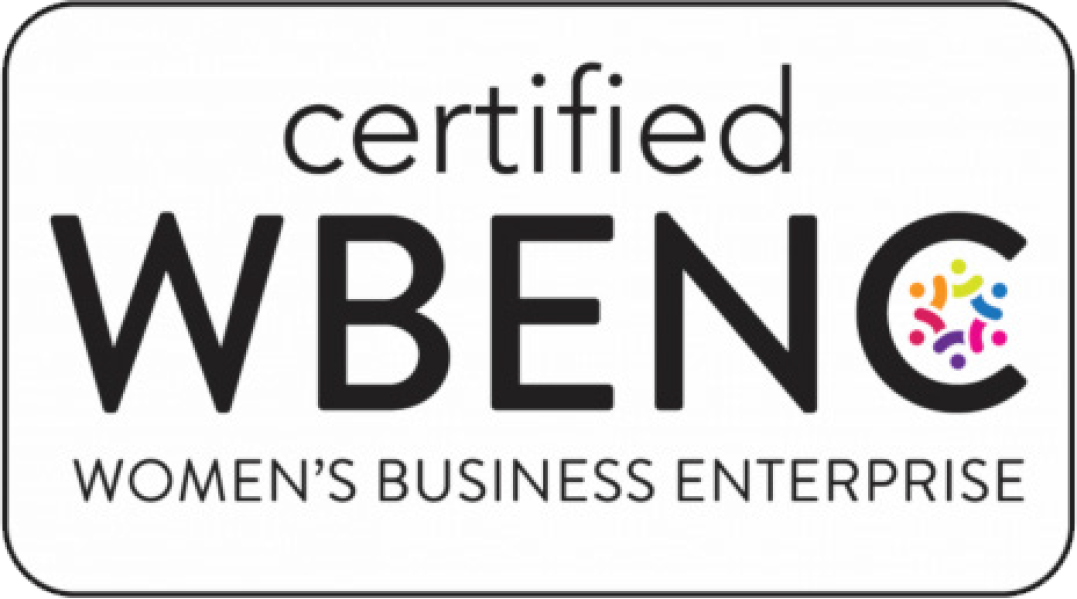Like the notorious line at the gate of h-e-double-hockey-sticks, there are some phrases in the English language that naturally induce fear and anxiety.
On a dark and stormy night.
Little did she know. The call was coming from inside the house.
We have one more for you: Annual Enrollment.
The American Healthcare system (also a terrifying phrase) is … dare we say … not user friendly. Not since the labyrinth with its minotaur has a maze so completely baffled and terrified everyone who enters it.
And during Annual Enrollment, employees get their first glimpse into this vast room filled with dead ends and booby traps. Webs of jargon hang menacingly from the ceilings. Dark, bottomless pits of disclaimers yawn up from the floor. Endless rows of weathered, splintered doors line the hallways. Behind some of them are the sounds of muffled screams.
It’s enough to make anyone want to abandon the whole endeavor and just vow to never get sick.
As a communicator, you can’t fix everything that’s wrong (and scary) about the healthcare system. But you can make it easier to understand with clear, simple annual enrollment communications.
Here’s how:
1. Get some outside eyes on your benefits guide.
Your HR team has read your guide so many times they can repeat it backwards, forwards and with a mouth full of water. That’s why, despite their expertise, they’re not the best people to make improvements.
You need an outsider’s perspective. Someone who’s willing to ask some (seemingly) silly questions, like, “What’s this word mean?” and “Why does this paragraph have so many words?”
Because these are the questions your employees are asking right before their eyes glaze over and a pounding headache kicks in.
2. Make your comms a two-way street.
If you’ve been executing annual enrollment for several years, it’s tempting to fall into a rhythm.
Mail the postcards. Post the flyers. Send out the emails.
But how do you know you’re not just shouting into the void? Or if you’re providing information that employees truly need? For this, you need to talk to your audience, instead of at them.
Try these approaches:
- Survey employees well before annual enrollment. Ask them what questions they have and what information they want to see. Use their answers to inform your materials.
- Host informational sessions and allow employees to participate. Provide a comprehensive overview of your benefits, but don’t stop there. Share your screen and walk employees through the process. Use a virtual chat to solicit (and answer) questions. Record the session and share it afterwards. Break it into chunks and weave it throughout your annual enrollment channels and comms.
- Send a follow-up survey after annual enrollment. Ask employees what worked and what didn’t. At what point(s) were they confused? What could be improved? Use their feedback to inform your strategy for next year.
3. Treat your leaders like your most valuable channels.
People listen to people, not emails.
People are much harder to ignore. They don’t wait quietly in your inbox, waiting to be dragged to the trash can. Leaders also have the uniquely human ability to connect with other humans.
Equip your leaders with tools they can use to help their team members navigate the annual enrollment process and answer their questions.
4. Tell (true) stories.
Which is more powerful?
- Our tobacco cessation program can help you quit smoking.
- Our tobacco cessation program helped John kick the habit before his boy was born. So when he held his baby in his arms for the first time, he didn’t smell like cigarettes. He smelled like Dad.
Stories can be used to teach, inform and inspire. In your case, they can do all three.
Find folks whose lives have been improved by your benefits. Use their stories to add another dimension to your communications. People will listen.
5. Tie it all together with a campaign line.
We’ve written about campaign lines before.
But you don’t have to read that entire article now. We’ve pulled out the most relevant snippet below. (You’re welcome )
“[A campaign line] distills your point of view. It delivers that key point every time, in every channel, each time any related information is conveyed. Rather than struggling to “connect the dots” among various communications, employees begin to recognize the theme. Each time they receive a new communication, they aren’t starting from zero. The line becomes shorthand for delivering your key message repeatedly and consistently.”
You have a lot of different annual enrollment communications. When you unite them all with a campaign line, you transform them from a bunch of inbox clutter into a cohesive campaign that inspires action.
6. K.I.S.S. (Keep it Simple and Straightforward).
We know — benefits are complicated by nature. Deductibles, co-pays, co-insurance, out-of-pocket maximums, in-network, out of network…
Yikes.
It may sound counterintuitive, but it’s easier to write paragraph after paragraph explaining the ins and outs of your benefits. The real challenge is writing about your benefits in a way that’s easy to understand.
Nathaniel Hawthorne said it best. “Easy reading is damn hard writing.” Every line must be analyzed, picked apart and put back together. It’s a labor-intensive process, but it’s worth it. (If only you knew someone who loves doing that…)
But your journey to simplicity doesn’t stop at the words you use. Design plays a huge role in the reader’s experience.
Attention-grabbing callouts can draw the eye to important information.
Tables can help folks see the big picture.
Headings and subheadings can make everything feel less overwhelming.
When eye-catching design is paired with easy-to-read content, you have a benefits guide that’s a lot less intimidating and a lot more helpful.
Remember — while annual enrollment can feel like an expedition into the inferno, a little light and clarity can turn it into a walk in the park. So grab your flashlight and let’s illuminate the path forward together.
Like the notorious line at the gate of h-e-double-hockey-sticks, there are some phrases in the English language that naturally induce fear and anxiety.
On a dark and stormy night.
Little did she know. The call was coming from inside the house.
We have one more for you: Annual Enrollment.
The American Healthcare system (also a terrifying phrase) is … dare we say … not user friendly. Not since the labyrinth with its minotaur has a maze so completely baffled and terrified everyone who enters it.
And during Annual Enrollment, employees get their first glimpse into this vast room filled with dead ends and booby traps. Webs of jargon hang menacingly from the ceilings. Dark, bottomless pits of disclaimers yawn up from the floor. Endless rows of weathered, splintered doors line the hallways. Behind some of them are the sounds of muffled screams.
It’s enough to make anyone want to abandon the whole endeavor and just vow to never get sick.
As a communicator, you can’t fix everything that’s wrong (and scary) about the healthcare system. But you can make it easier to understand with clear, simple annual enrollment communications.
Here’s how:
1. Get some outside eyes on your benefits guide.
Your HR team has read your guide so many times they can repeat it backwards, forwards and with a mouth full of water. That’s why, despite their expertise, they’re not the best people to make improvements.
You need an outsider’s perspective. Someone who’s willing to ask some (seemingly) silly questions, like, “What’s this word mean?” and “Why does this paragraph have so many words?”
Because these are the questions your employees are asking right before their eyes glaze over and a pounding headache kicks in.
2. Make your comms a two-way street.
If you’ve been executing annual enrollment for several years, it’s tempting to fall into a rhythm.
Mail the postcards. Post the flyers. Send out the emails.
But how do you know you’re not just shouting into the void? Or if you’re providing information that employees truly need? For this, you need to talk to your audience, instead of at them.
Try these approaches:
- Survey employees well before annual enrollment. Ask them what questions they have and what information they want to see. Use their answers to inform your materials.
- Host informational sessions and allow employees to participate. Provide a comprehensive overview of your benefits, but don’t stop there. Share your screen and walk employees through the process. Use a virtual chat to solicit (and answer) questions. Record the session and share it afterwards. Break it into chunks and weave it throughout your annual enrollment channels and comms.
- Send a follow-up survey after annual enrollment. Ask employees what worked and what didn’t. At what point(s) were they confused? What could be improved? Use their feedback to inform your strategy for next year.
3. Treat your leaders like your most valuable channels.
People listen to people, not emails.
People are much harder to ignore. They don’t wait quietly in your inbox, waiting to be dragged to the trash can. Leaders also have the uniquely human ability to connect with other humans.
Equip your leaders with tools they can use to help their team members navigate the annual enrollment process and answer their questions.
4. Tell (true) stories.
Which is more powerful?
- Our tobacco cessation program can help you quit smoking.
- Our tobacco cessation program helped John kick the habit before his boy was born. So when he held his baby in his arms for the first time, he didn’t smell like cigarettes. He smelled like Dad.
Stories can be used to teach, inform and inspire. In your case, they can do all three.
Find folks whose lives have been improved by your benefits. Use their stories to add another dimension to your communications. People will listen.
5. Tie it all together with a campaign line.
We’ve written about campaign lines before.
But you don’t have to read that entire article now. We’ve pulled out the most relevant snippet below. (You’re welcome )
“[A campaign line] distills your point of view. It delivers that key point every time, in every channel, each time any related information is conveyed. Rather than struggling to “connect the dots” among various communications, employees begin to recognize the theme. Each time they receive a new communication, they aren’t starting from zero. The line becomes shorthand for delivering your key message repeatedly and consistently.”
You have a lot of different annual enrollment communications. When you unite them all with a campaign line, you transform them from a bunch of inbox clutter into a cohesive campaign that inspires action.
6. K.I.S.S. (Keep it Simple and Straightforward).
We know — benefits are complicated by nature. Deductibles, co-pays, co-insurance, out-of-pocket maximums, in-network, out of network…
Yikes.
It may sound counterintuitive, but it’s easier to write paragraph after paragraph explaining the ins and outs of your benefits. The real challenge is writing about your benefits in a way that’s easy to understand.
Nathaniel Hawthorne said it best. “Easy reading is damn hard writing.” Every line must be analyzed, picked apart and put back together. It’s a labor-intensive process, but it’s worth it. (If only you knew someone who loves doing that…)
But your journey to simplicity doesn’t stop at the words you use. Design plays a huge role in the reader’s experience.
Attention-grabbing callouts can draw the eye to important information.
Tables can help folks see the big picture.
Headings and subheadings can make everything feel less overwhelming.
When eye-catching design is paired with easy-to-read content, you have a benefits guide that’s a lot less intimidating and a lot more helpful.
Remember — while annual enrollment can feel like an expedition into the inferno, a little light and clarity can turn it into a walk in the park. So grab your flashlight and let’s illuminate the path forward together.
 SUBSCRIBE TO
SUBSCRIBE TO
Three fresh ideas (and a meme)
Love what you just read? There’s more! Sign up for our monthly newsletter for even more thought-provoking ideas (and reasons to LOL).


